I’ve previously reported on the Sorento PHEV’s winter driving performance, and more recently tested its range with Bridgestone Blizzak snow tires mounted as well. But on this latest trip I have finally gotten a chance to test the vehicle, and its snow tires, in truly harsh winter conditions. I can say that so far, after about 200 total miles, I did not experience even the briefest loss of traction on roads caked with compact snow and ice from multiple days of freezing temps (dipping into the single digits). That said, I did encounter a few issues, nothing we couldn’t work around or that got in the way of our comfort or convenience though.
Here’s a rundown of the trip so far. We left our home in the Seattle suburbs on the edge of a severe winter storm. The day started out gorgeously sunny but by early afternoon when we set out on our drive, storm clouds moved in dumping fluffy snow flurries, followed by a mix of freezing rain, and then finally full on snow as the temps dropped 25 degrees in the span of a few hours with about 4 or 5 inches of accumulation. We were working our way north, visiting first with some friends half an hour away for a late lunch and then on for another 2 hours to our final destination across the street from Puget Sound in beautiful Birch Bay, WA.
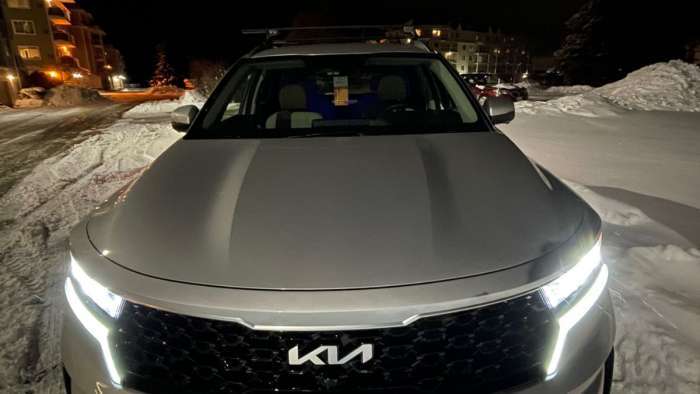
A few things happened on the way up that I had never experienced in our Kia before. First the freezing rain caked itself over the cameras and sensors that enable the active or “smart” cruise control, disabling it for most of our drive (all but the first 40 miles of the 136 mile trip). This wasn’t a concern, for us, because it isn’t really safe to use this technology in blizzard conditions anyway so we just drove the car the old fashioned way (by ourselves!). Next, the driver’s side rear window got briefly stuck due to water freezing it in place. This is the window which had been replaced previously after some terrible human smashed it in, looking unsuccessfully for something valuable to snatch, so perhaps this was due to it being “out of spec”. The window did come down after pressing and holding the button for a second or two (something I worried might have been a bad idea afterward). I also noticed the doors actually sticking a little due to some frozen rain that had accumulated around the weather stripping (but it did not really impede the opening or closing of the doors, it just made noise as the ice broke). Finally, the heater worked well… or it did as soon as I remembered something I learned from another Sorento PHEV owner on social media. When in EV mode, and the cabin heat is turned on to a temp other than “Lo”, the gas engine will run to provide heat. However, if you are only idling the engine for heat it will will take several minutes (maybe 10-20 even) to warm up. As an option, you could manually switch to HEV mode and the engine will warm up much quicker as will the cabin. At least this proved true for me when the temps were in the teens. Note that putting the vehicle in HEV mode instead of just idling for heat may be less fuel efficient, depending.
One other thing I noticed about the heat in this test: when switching back to EV mode, after running the vehicle in HEV mode or just with the heat on for a time, you can go a few miles (or perhaps several if temperatures are more moderate) drawing heat from the warmed up engine without it turning back on. As soon as the engine gets cool enough though, it will start up again. It was only 13 degrees F when I tested this though and it seems like we only managed to get about 3 or 4 miles down the freeway before the engine had completely cooled off.
Finally, I tried to break the wheels loose, a little, around some gentle corners and in the parking lot when no one else was around. Not that I was pushing it too hard or anything, but the Kia on its Bridgestone Blizzaks didn’t struggle for traction at all even when I goosed it a bit on solid ice; the AWD drive and tires worked together in perfectly choreographed motion. Roundabouts slick with compacted snow, and unplowed arterial roads were also no challenge for the surefooted Sorento. I’ll test in even deeper snow in my follow up piece; we just got another foot of snow today. Stay tuned and please leave any questions or comments below.
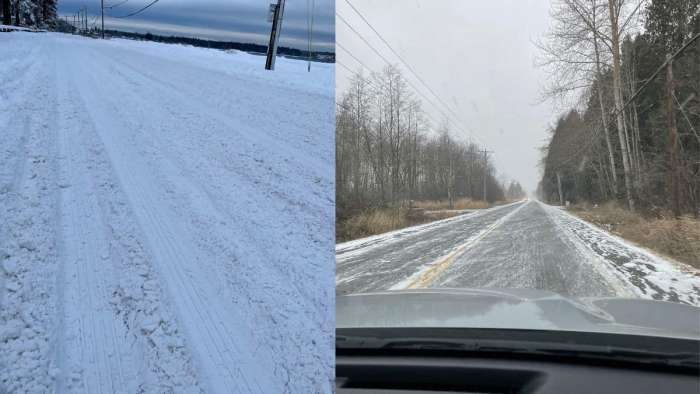
Images courtesy of Justin Hart.
Justin Hart has owned and driven electric vehicles for over 15 years, including a first generation Nissan LEAF, second generation Chevy Volt, Tesla Model 3, an electric bicycle and most recently a Kia Sorento PHEV. He is also an avid SUP rider, poet, photographer and wine lover. He enjoys taking long EV and PHEV road trips to beautiful and serene places with the people he loves. Follow Justin on Twitter for daily KIA EV news coverage.



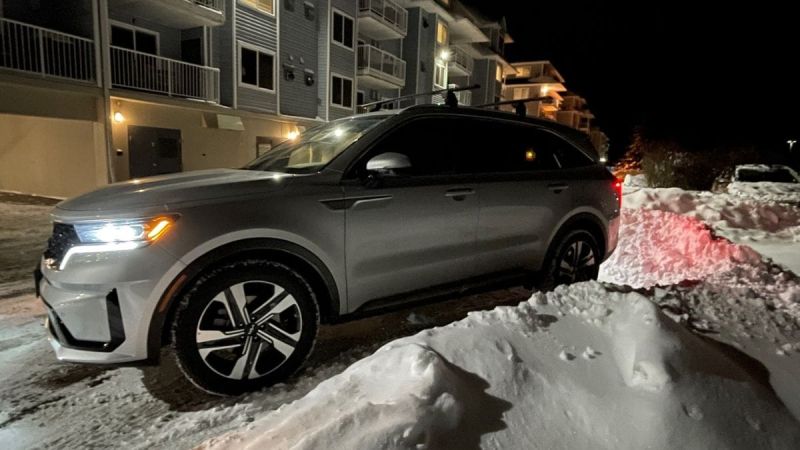




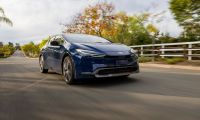
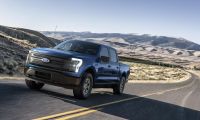


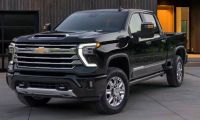
Comments
Great story! May I ask if you
Permalink
Great story! May I ask if you have ever felt that the regenerative braking causes a bit of instability when you lift off the accelerator pedal on a slippery surface? The Tesla owners discuss this in their social media clubs, and I wondered if it was all electrified vehicles that it may be a trait of.
I have not noticed this at
Permalink
In reply to Great story! May I ask if you by John Goreham
Thanks!! And I have not noticed this at all on the Kia Sorento PHEV, but that is probably due to the fact that it doesn’t have as strong regen as the Teslas typically have/can have. I did experience being unable to brake completely due to loss of traction on compact snow and ice covered by lose snow tonight! The ABS was thumping away but I slid a few feet into an intersection and then hung a right turn to avoid possibly sliding into cross traffic - but this wasn’t due to reign braking, but the awful conditions of the roads. As the owner of a RWD Tesla I can also say that I have never experienced the Tesla causing instability while braking in snow either, but I also have good Michelin X-Ice snow tires on my Tesla and I will usually brake more gently/regen at less than full capacity whenever I know that conditions are slippery (by modulating how much and how quickly I let off the accelerator). In my opinion, it comes down to: 1. how experienced is the driver in snow (and in driving an EV/PHEV in the snow) and 2. are you being smart (by using snow tires and or chains or their equivalent? All season tires generally are not that great in the snow. The right too for the job is my motto.